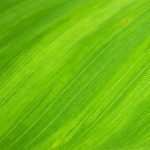DECEMBER JOBS
CHRISTMAS TREES
The most popular Christmas trees are,Norway Spruce (picea abies), The Nordman Fir (Abies nordmanniana,) or the Colorado Spruce (picea pungens). All three are very good, have specific virtues and can last for a long Christmas season if looked after properly.
All three will also grow in most gardens if they are bought with healthy roots and planted carefully as soon as possible after Christmas.
If you get confused between any of the Spruces (Picea) and Firs (Abies) – there is one easy way to differentiate the two species. The cones of spruces hang down whereas the cones of Firs stand up like candles.
The Norway Spruce grows very fast and for centuries it was the main source of softwood, or deal. It is officially Europe’s largest tree and given the right conditions of damp, cold winters and damp, cool summers, it will grow to more than 200ft tall.
It is very resistant to cold and frost-hardy although it never thrives when grown on chalk or limestone.
Abies nordmanniana, The Caucasian or Nordman fir is much more truly evergreen than the Norway Spruce in that it only sheds its needles after about 15 years before replacing them. It also has more horizontal and rather more dense branches. The effect can make a more compact, more evenly shaped Christmas tree.
It originates from the Eastern shores of the Black sea and will grow even bigger than the Norway Spruce, reaching 225ft. It grows on limestone in its Caucasian home but like the Norway Spruce it grows best in moist, cool, slightly acidic conditions.
My favourite Christmas tree is the Colorado, or Blue, Spruce, picea pungens. Although it comes from the southern states, it originates from a high altitude, so is very hardy and grows into a tall, very straight, rather beautiful tree, with glaucous blue needles the colour of cardoon or artichoke leaves.
The high altitude and bright mountain light gives it a rather stiff habit which is one of its main attractions as a Christmas tree. If you do plant one in the garden it will grow much stronger if given maximum sunlight.
MISTLELTOE
The Mistletoe in my garden has had ripe berries for the past month – which, like everything in the garden this year, is unseasonal but means it is perfect for Christmas.
Mistletoe likes damp weather and needs a host to grow from. It is not truly parasitic in that it does generate some of its own food via photosynthesis from its evergreen leaves but the roots work into the host wood like spokes of a wheel and will, in time, constrict and kill the branch – and therefore ensure its own death too.
Male and female plants can be distinguished by their growth – male ones hang lower and have no berries and female plants carry the milky white berries and are more upright.
The berries are eaten by blackcaps and thrushes that then wipe the sticky fruit from their beaks which, in turn adhere seeds to the bark which then germinate.
The easiest way to cultivate it is to replicate that and rub ripe fruits containing the sticky seeds into the bark of a hawthorn, apple, poplar, Lime (tilia) or field maple. Next spring a small shoot will appear and quickly establish itself. The apples in my orchard now have dozens of large bunches as well as in the hedgerow around it.












